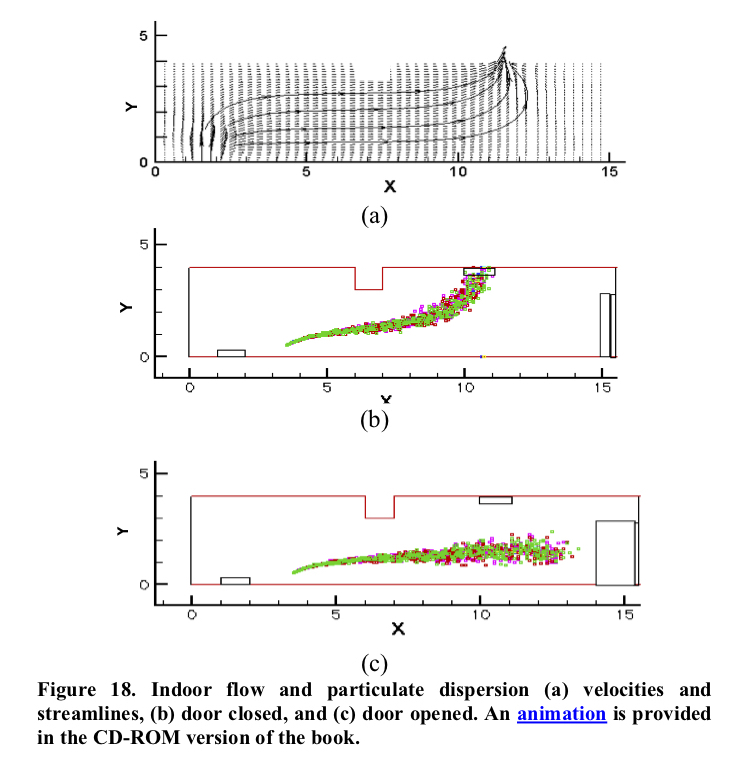Indoor Air Pollution Modeling Advanced

Reading Guide
Emission of pollutants and their accumulation due to poor ventilation and air exchange are serious problems that are currently under investigation by many researchers. Of particular concern are issues involving air quality within buildings. Toxic fumes and airborne diseases are known to produce undesirable odors, eye and nose irritations, sickness, and occasionally death. Other products such as tobacco smoke and carbon monoxide can also have serious health effects on people exposed to a poorly ventilated environment; studies indicate that indirect or passive smoking can also lead to lung cancer. Recent concerns include indoor spreading of viruses and the use of indoor modeling to properly design ventilation in hospitals and public indoor areas.
The most advanced numerical tools to simulate indoor air flow and air pollution dispersion are Computational Fluid Dynamics (CFD) Models, such as:
A summary chapter (Pepper and Carrington, 2005) from the book Air Quality Modeling - Theories, Methodologies, Computational Methods, and Available Databases and Software, Vol II (Zannetti, Ed. 2005) is included as pdf file.
Material
Guide prepared by P. Zannetti (9/2020). For corrections or expansions please contact us.